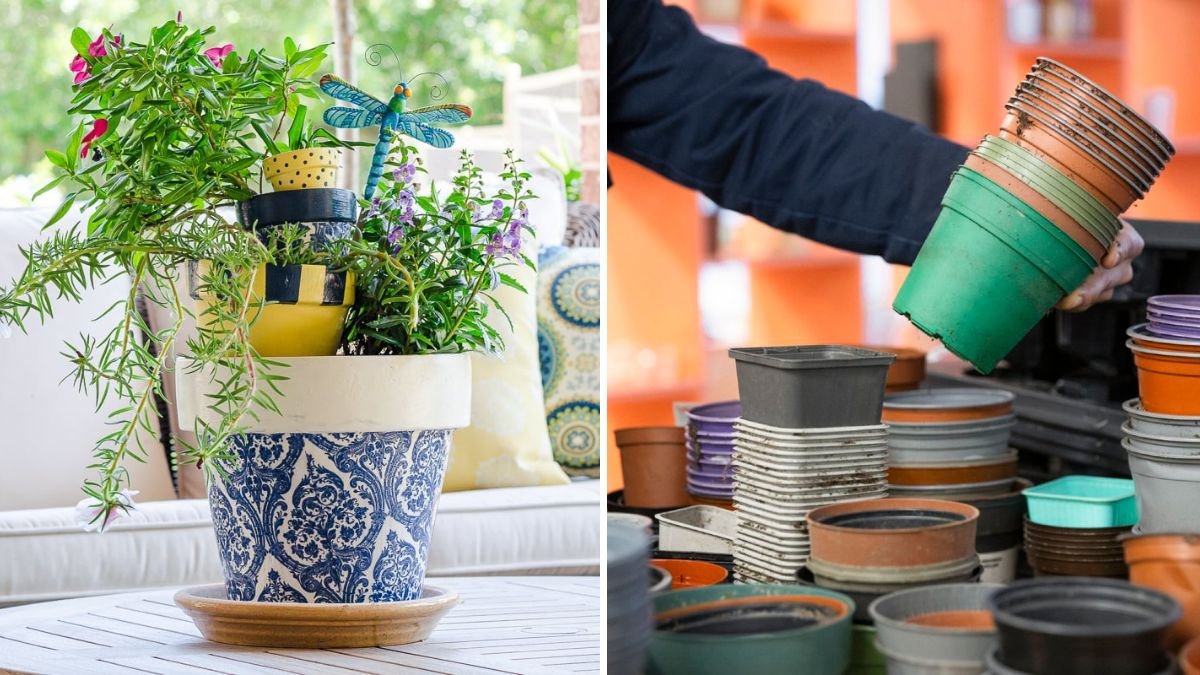Container gardening is a popular choice for urban gardeners, balcony enthusiasts, and indoor plant lovers. Reusing old pots is not only economical and environmentally friendly, but it also allows you to maintain a consistent aesthetic in your garden. However, reusing pots without proper cleaning can lead to disease transmission between plants, resulting in stunted growth, wilting, or even plant death. This article explores how to safely reuse old pots, prevent disease, and promote healthy, thriving plants.
1. Why Reusing Pots Can Be Risky
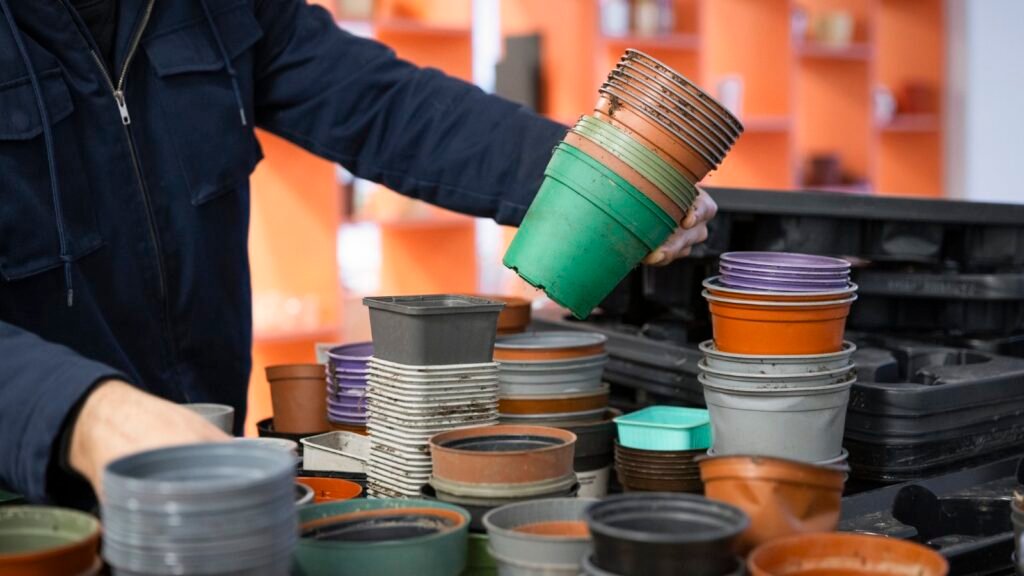
Old pots often carry residues of soil, pathogens, and pests that may survive long after a plant has been removed:
- Fungal Spores: Diseases like root rot, powdery mildew, or Fusarium can linger in soil particles stuck to pots.
- Bacterial Pathogens: Soft rot and bacterial leaf spot can survive on contaminated surfaces.
- Pest Eggs: Fungus gnats or spider mite eggs may remain in crevices.
- Salt and Mineral Build-Up: Hard water or fertilizer residues can affect new plants’ nutrient uptake.
If not sanitized, these pathogens can infect new plants, reducing yields and increasing maintenance efforts.
2. Removing Old Soil and Plant Debris
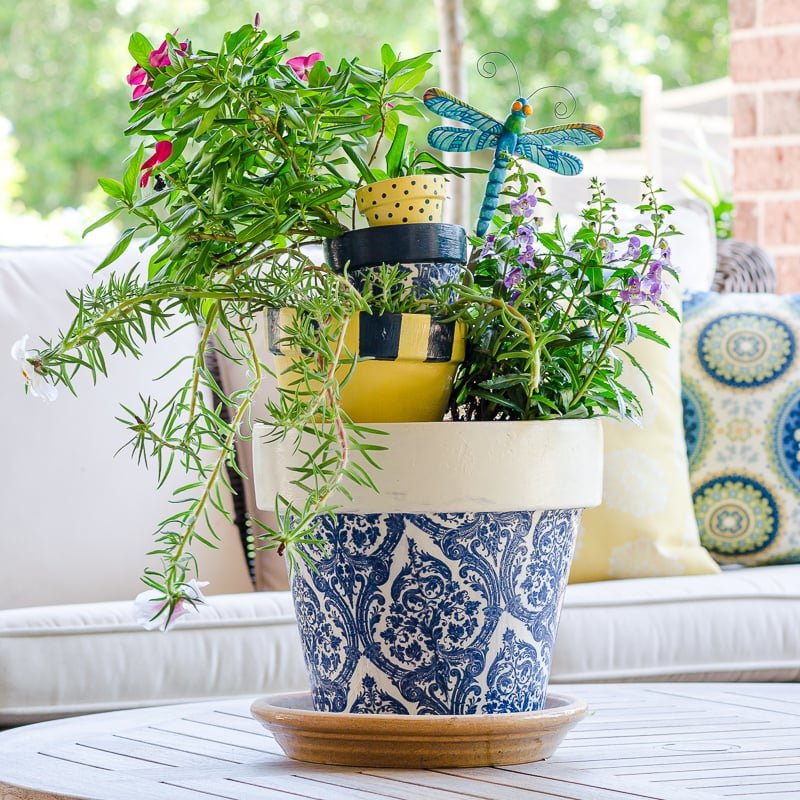
Before disinfecting, it’s important to remove all old soil and organic matter:
- Empty the Pot: Remove old plants, roots, and soil completely.
- Brush Away Residue: Use a stiff brush to clean the inside and outside surfaces.
- Rinse Thoroughly: Wash with water to remove fine particles stuck in corners, drainage holes, or grooves.
This initial cleaning reduces the pathogen load and ensures the disinfectant reaches all surfaces effectively.
3. Cleaning Solutions for Old Pots
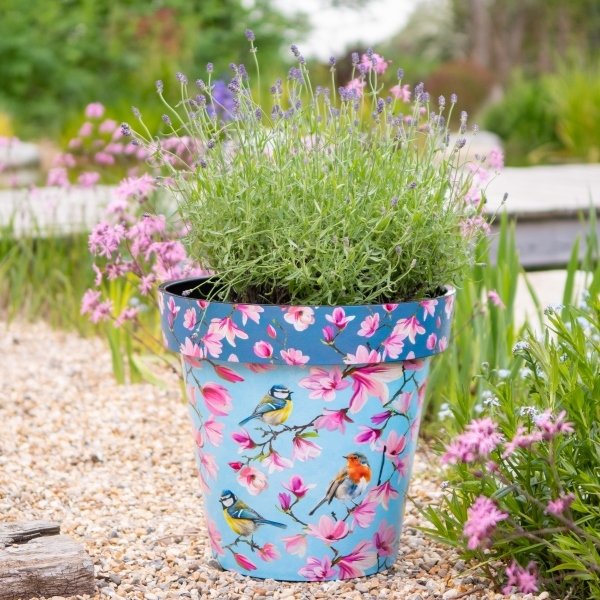
Several cleaning solutions are effective in killing residual pathogens:
A. Bleach Solution
- Mix 1 part household bleach to 9 parts water.
- Soak pots for 10–15 minutes.
- Rinse thoroughly with clean water to remove any chemical residue.
B. Vinegar Solution
- Combine 1 part white vinegar with 1 part water.
- Soak or wipe pots, especially for terracotta, which is porous.
- Rinse thoroughly after treatment.
C. Hydrogen Peroxide
- Use a 3% hydrogen peroxide solution for soaking or wiping.
- Effective against fungi and bacteria without leaving harsh residues.
D. Soap and Hot Water
- Scrub with mild dish soap and hot water.
- This is particularly effective for plastic pots to remove sticky residues.
Different materials may require different approaches:
- Plastic pots: Can be soaked in bleach or hot water without damage.
- Terracotta or clay pots: Porous, so soak for longer, rinse thoroughly, and allow to dry completely.
- Ceramic pots with glaze: Usually resistant to most disinfectants, but avoid harsh scrubbing to protect the glaze.
4. Drying and Sunlight Exposure
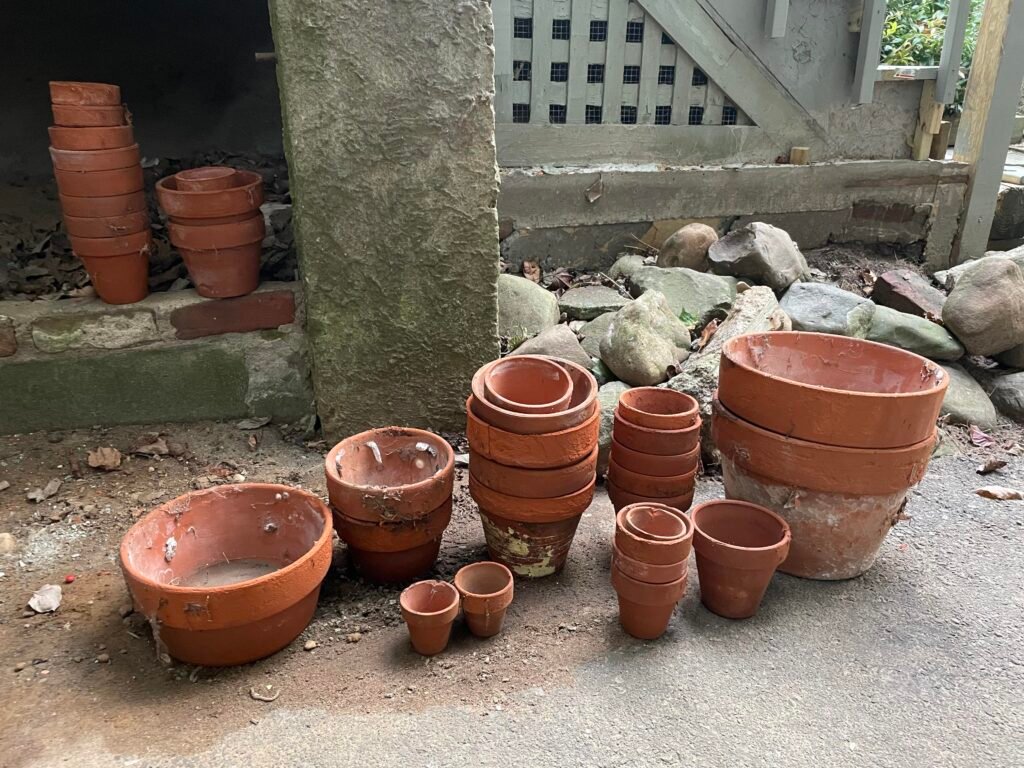
After cleaning, ensure pots are thoroughly dried:
- Air Dry: Place pots upside down in a sunny, ventilated area.
- Sunlight Disinfection: UV rays from sunlight naturally help kill residual pathogens.
- Avoid Damp Storage: Moisture encourages fungal growth and bacterial contamination.
Proper drying reduces the risk of pathogen survival and prepares the pots for reuse.
5. Using Heat for Sterilization
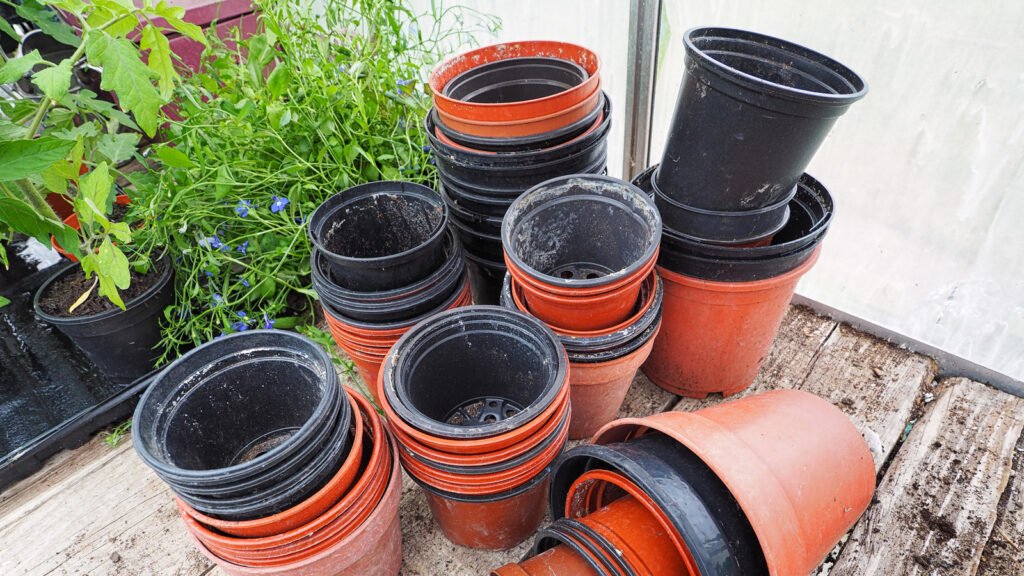
Heat can be an effective method to eliminate stubborn pathogens:
- Oven Sterilization:
- Plastic pots are not suitable; use only for clay or ceramic pots.
- Bake at 200°F (93°C) for 20–30 minutes.
- Boiling Water:
- Submerge small plastic pots in boiling water for 10–15 minutes.
- Steam Cleaning:
- Use a garden steam sterilizer for larger or delicate containers.
Heat sterilization ensures complete pathogen elimination, particularly for fungal spores.
6. Preventing Cross-Contamination
Even after cleaning, pots can be recontaminated if not handled carefully:
- Separate Tools: Use dedicated brushes, gloves, and sponges for cleaning.
- Avoid Contact with Diseased Plants: Do not use recently infected pots for healthy plants.
- Regular Monitoring: Inspect pots for mold, algae, or residues before reuse.
- Proper Storage: Stack pots in a dry, clean area until ready for planting.
Preventing cross-contamination maintains a healthy growing environment for all new plants.
7. Reusing Pots Safely with New Soil
Even after disinfecting, never reuse old soil:
- Replace with fresh, high-quality potting mix.
- Avoid mixing old composted soil unless it has been sterilized.
- Add organic fertilizers or slow-release nutrients to support new plant growth.
Fresh soil combined with cleaned containers ensures maximum productivity and minimal disease risk.
8. Special Considerations for Different Pot Materials
A. Plastic Pots
- Lightweight, durable, and easy to disinfect.
- Avoid prolonged exposure to strong bleach, which can make the plastic brittle.
B. Terracotta/Clay Pots
- Porous, absorb salts and pathogens.
- Scrub thoroughly and soak longer in disinfectant.
- Dry completely in sunlight before reuse.
C. Ceramic or Glazed Pots
- Non-porous, easier to disinfect.
- Avoid abrasive scrubbing that can damage the glaze.
- Resistant to most chemical disinfectants.
D. Wooden Containers
- Often require sanding and disinfecting with a mild bleach or vinegar solution.
- Treat with a natural sealant to prevent rot before planting.
Understanding pot material ensures proper cleaning without damage.
9. Long-Term Maintenance
To maintain pots for repeated use:
- Regular Cleaning: Clean pots immediately after harvest.
- Avoid Overcrowding: Overcrowded plants increase disease risk.
- Rotate Plants: Avoid planting the same species consecutively to reduce pathogen buildup.
- Mulching: Use mulch to prevent soil from touching pot surfaces, reducing contamination.
- Periodic Sterilization: Treat pots with disinfectants periodically, especially if used outdoors.
Long-term maintenance ensures pot longevity and healthy plants.
10. Signs a Pot Should Not Be Reused
Sometimes, reusing a pot may not be safe:
- Cracked or Damaged Pots: Compromised structural integrity and water retention.
- Severe Salt Build-Up: White crusty deposits that cannot be removed.
- Persistent Disease: If a pot has previously hosted plants with stubborn fungal or bacterial infections.
- Odor: Lingering foul smell despite cleaning indicates residual pathogens.
In such cases, it’s safer to retire the pot and use a new one.
11. Benefits of Reusing Pots Safely
- Cost-Effective: Save money by reusing pots instead of buying new ones.
- Eco-Friendly: Reduces plastic and ceramic waste.
- Aesthetic Consistency: Maintain a unified look in your garden.
- Sustainable Gardening: Encourages a responsible and circular approach to gardening.
Safe reuse combines financial savings, environmental care, and plant health.
12. Practical Tips for Gardeners
- Label pots with plant names and last use date for easy rotation.
- Keep a dedicated cleaning station with brushes, gloves, and disinfectants.
- Store pots off the ground to prevent algae and pests.
- Avoid sharing pots between gardeners unless thoroughly disinfected.
- Use small containers for herbs and vegetables to minimize pathogen spread.
These practices make reusing pots efficient, safe, and effective.
Conclusion
Reusing old pots can be a sustainable and economical choice for gardeners, but it requires careful cleaning, disinfection, and maintenance to prevent disease transmission. By following these steps—removing old soil, disinfecting, drying thoroughly, using new soil, and monitoring plant health—you can safely reuse containers for years without risking plant health.
Key Takeaways:
- Clean all soil and debris before disinfecting.
- Use effective disinfectants like bleach, vinegar, or hydrogen peroxide.
- Allow pots to air dry in sunlight or use heat sterilization for stubborn pathogens.
- Avoid cross-contamination with tools, hands, or diseased plants.
- Always plant in fresh soil to prevent pathogen carryover.
- Inspect pots regularly and replace if damaged or persistently contaminated.
Following these practices ensures your garden remains healthy, productive, and disease-free, while reusing pots reduces costs and environmental impact.
